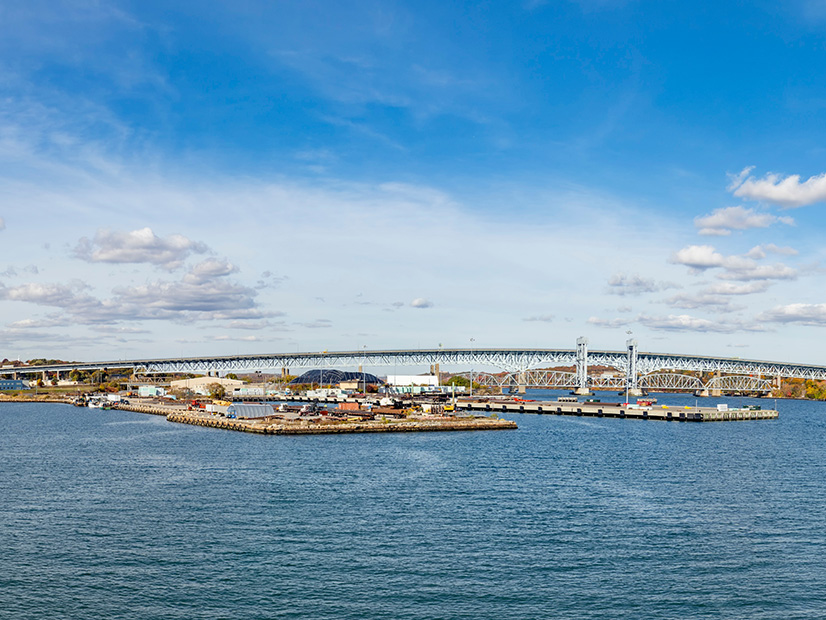
States in New England are relying on offshore wind (OSW) to cut greenhouse gas emissions, but they need to hear from ISO-NE on where transmission upgrades are most needed before they can start harnessing the energy.
“I think [ISO-NE] is best-positioned to be able to provide the states with that kind of planning analysis,” Connecticut Department of Energy and Environmental Protection (DEEP) Commissioner Katie Dykes said at the Environmental Business Council of New England’s Connecticut Offshore Wind Webinar on Friday.
Other onshore renewable energy resources, Dykes said, need to be considered in the transmission planning process for OSW to avoid unintended consequences of congestion or curtailment between resources.
“The [ISO-NE] planning process for transmission has been pretty reactive,” Dykes said, and states are calling for a more proactive approach to building out the grid.
But New England states also need to work with ISO-NE in providing information on what their transmission and climate goals are so the system operator can include them in its planning efforts.
Since 2012, for example, Connecticut’s Integrated Resource Plan (IRP) has assessed supply and demand to formulate recommendations for the state’s electricity needs. The final version of the latest IRP is due later this month, Dykes said. And in Massachusetts, Gov. Charlie Baker’s administration developed a Decarbonization Roadmap to model how the state will reduce emissions at least 85% by 2050, including plans for electrification that require significant transmission updates.
Connecticut and Massachusetts want to plug the IRP and roadmap into ISO-NE’s scenario planning process, Dykes said.
Last year, all six New England states, through their representatives to the New England States Committee on Electricity, signed a vision statement that calls for ISO-NE to make the changes necessary to cost-effectively build the transmission needed to integrate OSW and other renewables.
In July, FERC opened a rulemaking to reconsider its rules on transmission planning, cost allocation and generator interconnection, acknowledging that Order 1000 has failed to provide interregional expansions to deliver increased renewables and meet the challenge of climate change. (See FERC Goes Back to the Drawing Board on Tx Planning, Cost Allocation.)
FERC’s review is important, Dykes said, because New England is “long delayed in reforms to the transmission procurement process.”
To unlock the transmission investment needed to integrate future offshore wind and other renewables, it is “critical that we’ll be able to participate in the process,” Dykes said.
Connecticut currently has about 90% of its electricity load under contract with renewable and zero-carbon resources, including the 704-MW Revolution Wind project between Eversource Energy (NYSE: ES) and Ørsted off the coast of both Connecticut and Rhode Island. The developers expect to place the project in commercial operation by 2025.
In addition, Vineyard Wind’s 804-MW Park City Wind project is located 23 miles off the coast of Massachusetts but will bring renewable energy to the residents of Connecticut.
Prices for OSW are steadily declining, Dykes said. The contract prices for Connecticut’s projects declined 20% from $99.50/MWh to $79.83/MWh, she said.
“These [prices] are a testament to the success of the competitive procurement mechanism Connecticut has been using to invest in OSW, as we provide certainty and finance stability for these projects going forward,” Dykes said. “The next challenge we have to tackle is transmission.”

